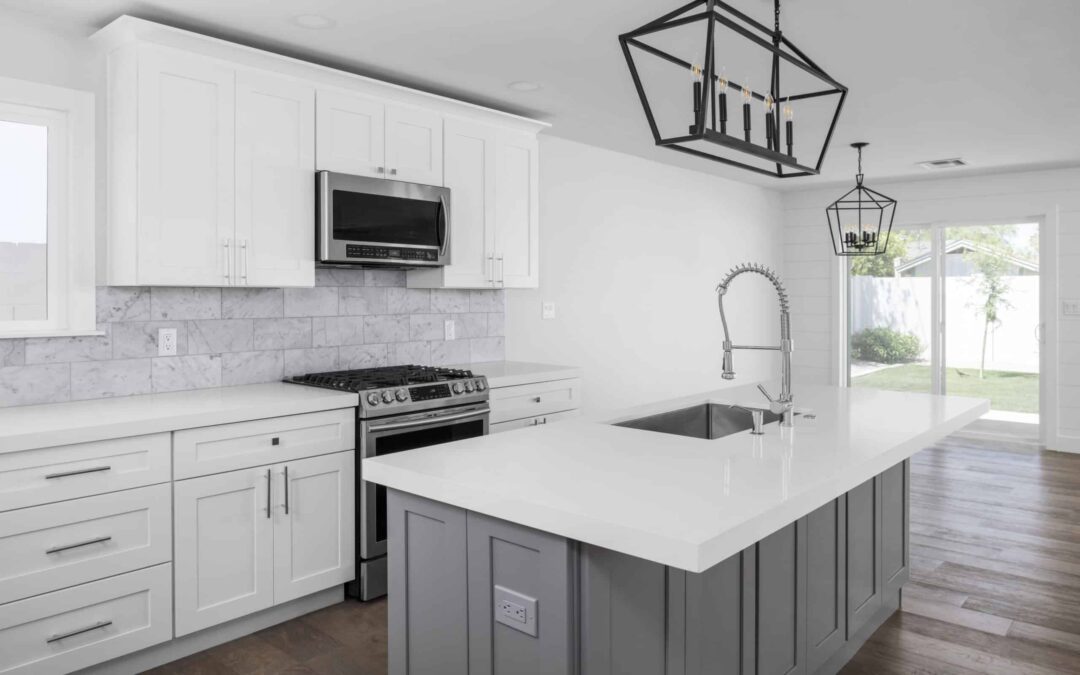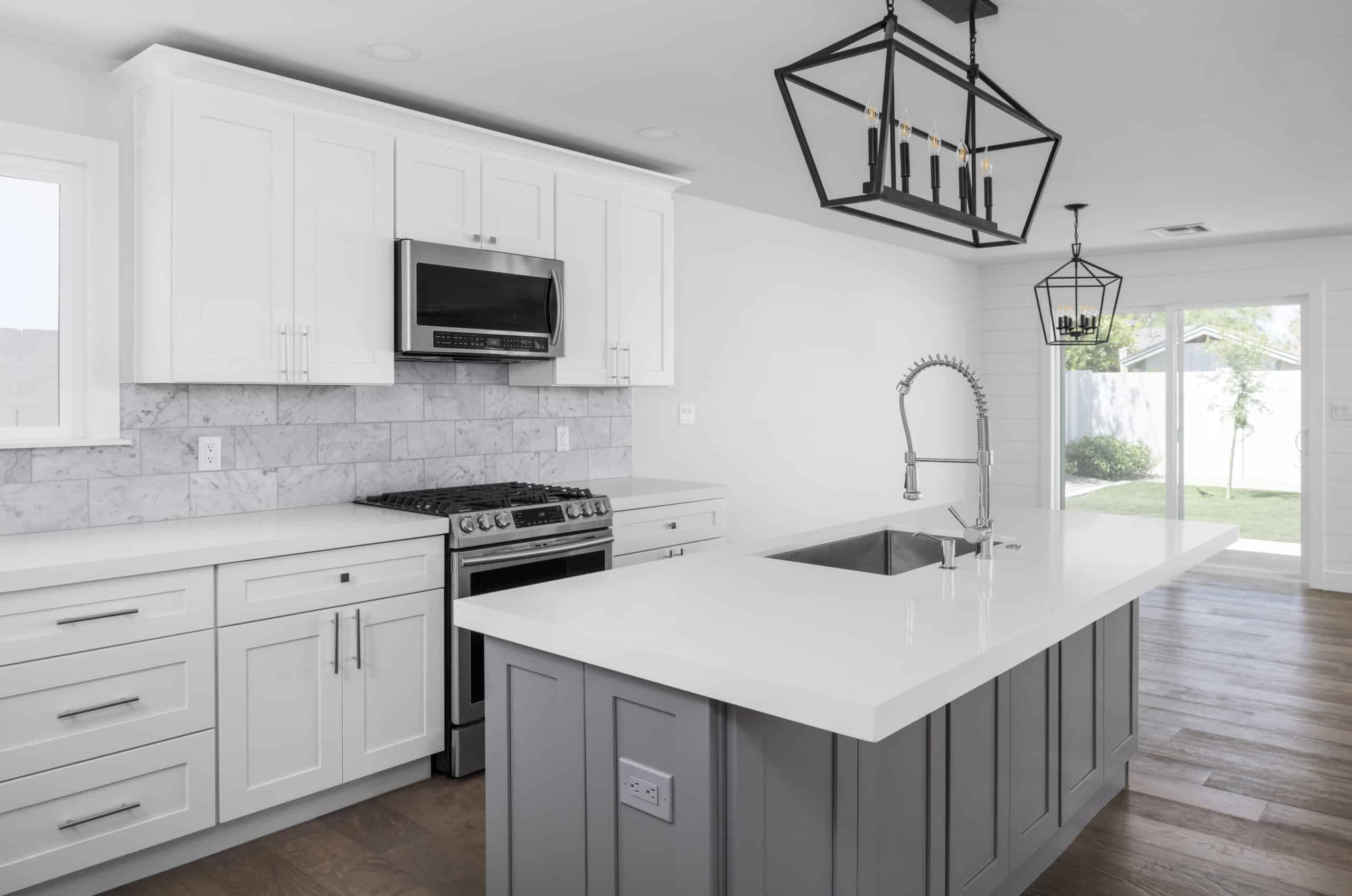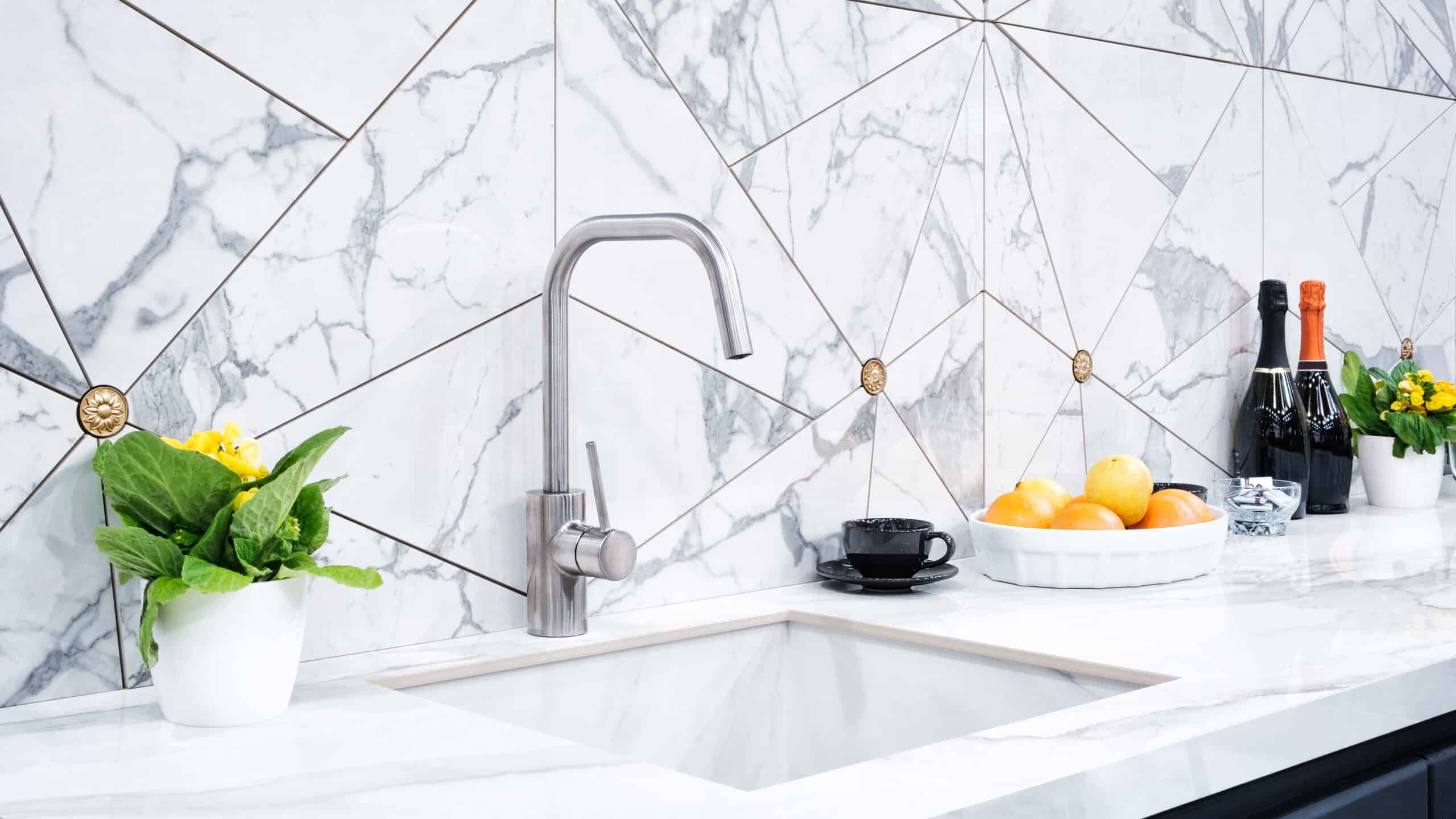Remodelling or renovating your kitchen? Outside of appliances, countertops and cabinets, two of the biggest decisions you’ll have to make involve selecting the flooring tile and backsplash. In this post, we’ll provide an overview of what to consider for each.
Key Benefits of Tile
Tiles are the preferred flooring choice in kitchens for reasons beyond their appearance. Key benefits include:
- Durability
- Ease of cleaning and maintenance
- Water-resistance
How to Select Kitchen Tiles
Here’s an overview of some of the key considerations you’ll want to keep in mind when selecting kitchen tiles:
Type of Tile (and Tile Size)
There are three main types of tile that are often installed in the kitchen: porcelain, ceramic and stone:
- Porcelain tile is crafted from a sand and clay mixture and tends to be hard, dense and less porous (i.e., more water resistant) than other types of tile. It’s an ideal choice for highly trafficked areas of the home. Porcelain tile comes in both glazed and unglazed styles, the former which includes a coloured coating that’s applied during the firing process compared to colour added to the clay mix when creating unglazed porcelain. Glazed porcelain is more prone to scratches and blemishes, however.
- Ceramic: Like porcelain, ceramic tile is available in a wide range of colours and patterns. However, the big difference is that it tends to be a softer tile than porcelain, which makes it easier to cut and shape and thereby easier to install. It’s resistant to spills and water, yet tends to be more porous than porcelain and other tile materials.
- Stone tile tends to serve as more of a luxury tile option for the kitchen. Known for its beauty and durability, stone is crafted from natural materials that may include limestone, slate, granite and marble.
Once you’ve settled on a type of preferred tile, you’ll need to think about the size. Smaller tiles – from 6 x 6 inches through even 12 x 12 inches – are typically the preferred size in smaller kitchens, while larger sizes – from 16 x 16 inches through 24 x 24 inches – tend to be preferred in commercial kitchens and larger residential kitchens.
Personal Tastes
Preferences are subjective and vary from person to person, but there are some basic guidelines to follow when it comes to selecting a tile colour and style. For example, lighter tiles tend to be an ideal complement to kitchens that have bolder-coloured countertops or dark wall tiles or backsplashes. Conversely, darker tiles tend to help make a room look bigger and may be an attractive option for smaller kitchens. Grey colours tend to offer a minimalistic look and are an ideal complement to more contemporary decor.
In terms of tile style, there are shaped tiles, grid formation tiles and even the option to pattern more than one colour if you really want the room to pop.
Aesthetics
While we highlighted the main tile types above, many are also available in different finishes. For instance, porcelain tiles can be either glazed or unglazed. Ceramic tiles are available in matte, semi-gloss and high-gloss finishes.
One thing to also keep in mind when it comes to your overall kitchen aesthetic and the tile is the grout. Grout lines can serve as a design feature and really help take your kitchen to that next level. If you want the kitchen to really become a focal point of your home, make sure the grout colour contrasts with the colour selected for your tiles.
Durability and Water Resistance
As noted above, durability and water-resistant properties are key benefits of tile. But these vary between types of tiles:
- Tiles are rated for durability on a scale of 0-5. The higher the rating, the more durable it is. Generally, you’ll want a more durable tile if your kitchen receives a lot of foot traffic.
- Tiles are also measured based on their absorption rate. If you’re really worried about moisture, select tiles with a low absorption rate. Absorption rates tend to vary between glazed and unglazed tiles.
Choosing a Backsplash
Outside of flooring tiles in the kitchen, the other big decision you’ll want to make is selecting a backsplash.
Selecting the Right Colors, Patterns
When selecting the backsplash, it’s typically best practice to select one main colour and several accent colours. You can be a little more creative with backsplash patterns and colours than you can with tiling due to the nature of where the backsplash is installed.
Take home numerous samples and tape them to the wall to observe how they complement the flooring, countertops and kitchen appliances. Also, check to see how the colour might differ in various parts of the day and in different light settings.
Materials Matter
The material your backsplash is crafted from matters for more than just its looks. It will also dictate how easy it is to clean, its wear and tear, how to seal it and more. Backsplash materials are available in affordable varieties, such as peel and stick, to more advanced glass, metal, porcelain and stone. Make sure you have a clear understanding of how the materials will function after installation. Like tiles, backsplashes come in different styles and patterns.
Get Guidance From Tile Experts
Selecting the tile and backsplash for your kitchen remodel isn’t something that should be done quickly. It’s important to make sure you understand the various materials that you have to select from and choose a colour and pattern that complements other kitchen features. For more information on selecting the right kitchen tiles for your next project, contact Sarana Tile today.



